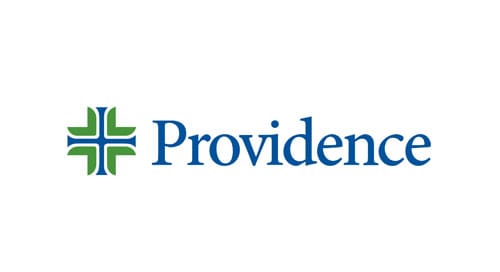Prime Time
Jayson Brower, M.D., and Louisa Lavy, M.D., review digital scans for blocked arteries in the brain.(Photo: Gary Matoso)
Technology is clearing the way for more effective stroke treatment
Shortly before bedtime, a man notices numbness and tingling in his right arm. But it hardly seems like an emergency, and he decides to turn in for the night.
The next morning, he wakes up paralyzed on his right side and struggles to speak — he’s the victim of a stroke, caused by a clot in a blood vessel leading to his brain. Family members rush him to the hospital, but it’s too late to do much. The time window for removing the clot has passed, and his brain tissue has been deprived of oxygen for so long that the damage is permanent.
Not long ago, a person who was experiencing a stroke in these circumstances might have spent the rest of his years in an assisted living facility.
But now, thanks to advances in technology, trial studies and treatment guidelines, the same person could walk out of the hospital to enjoy an independent life.
Trial Breaks New Ground
Providence Sacred Heart Medical Center has adopted RAPID, an imaging software that helps neurologists determine which stroke patients are eligible for a life-changing clot removal surgery. The software helps expand the surgery to more stroke patients.
This technology was validated by a landmark 2017 trial that showed advanced imaging techniques, combined with minimally invasive clot extraction, might extend the time frame in which physicians can perform a clot removal. This trial, called DAWN, revealed that patients can benefit from the surgery up to 24 hours after the onset of symptoms, up from the previous guideline of six hours.
The window for administering an intravenous treatment to dissolve a clot, tissue plasminogen activator (tPA), remains 4½ hours.
Sacred Heart stroke neurologist Yi Mao, M.D., was a fellow on the DAWN trial, which included people who arrived at the hospital between six and 24 hours after stroke onset. Under the previous six-hour guideline, the only course of action for such patients was rehabilitation to help them manage the debilitating effects of stroke.
But in the trial, people underwent clot removal if imaging suggested they had a large volume of brain tissue with insufficient oxygen supply. The results: For every 100 patients treated with clot removal, 49 had a less disabled outcome than they would have without treatment, with 36 of those becoming functionally independent.
“Before the trial, patients would not have been candidates for retrieval, and now they’re walking out of the hospital,” Dr. Mao says. “It was quite groundbreaking.”
Software Offers Clarity
Providers use RAPID software on mobile devices to help determine which stroke patients are eligible for clot removal surgery. (Photo: Gary Matoso)
Though Sacred Heart adopted the 24-hour treatment guideline in 2017, the new RAPID software better informs neurologists evaluating treatment for stroke.
A special type of CT scan provides a rough estimate of how much brain tissue is dysfunctional versus permanently damaged. RAPID builds on this CT scan by offering a real-time view of blood flow in the brain and measurements of salvageable brain tissue. As a result, neurologists can better determine which people would benefit from clot removal and which would not because of the risk of surgery.
“The RAPID software allows us to determine with more precision the patients who can still benefit from clot retrieval, particularly in the expanded window of six to 24 hours,” Dr. Mao says. “In the future, it may even allow us to select patients who can benefit from clot retrieval without a specific time restriction.”
Providers in Sacred Heart’s dedicated interventional radiology suite, which recently expanded during a $2.89 million redevelopment, are available 24/7 to serve stroke patients.
But while doctors now have more resources for treating stroke, time remains the most critical factor. Dr. Mao reminds people to think of the acronym FAST when recognizing a stroke:
- Face—is it drooping?
- Arm— can you raise both?
- Speech—is it slurred or strange?
- Time—if you observe any of these signs, call 911.
“For patients, the message doesn’t change if it’s 4½ hours or six hours or 24 hours. Time is brain,” Dr. Mao says. “If you think you’re having a stroke, don’t sleep on it; don’t try to wait it out. Seek care immediately.”
Subscribe to To Your Health for our best heart health insights and more, delivered straight to your inbox.
Recommended for you:
Stroke victims may have more time to recover
Ask an Expert: Can you have a stroke and not know it?
This information is not intended as a substitute for professional medical care. Always follow your health care professional's instructions.



